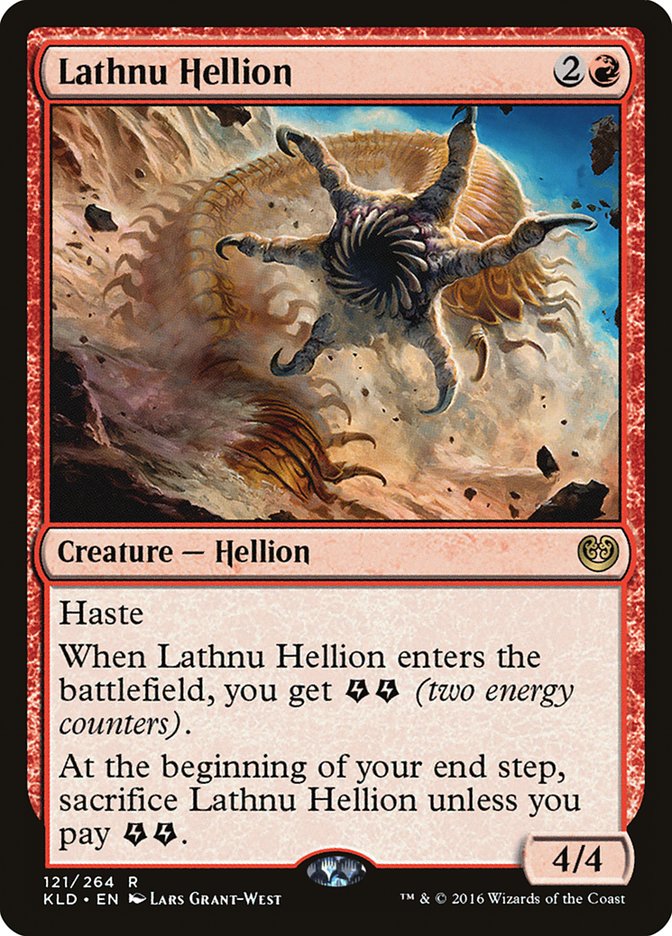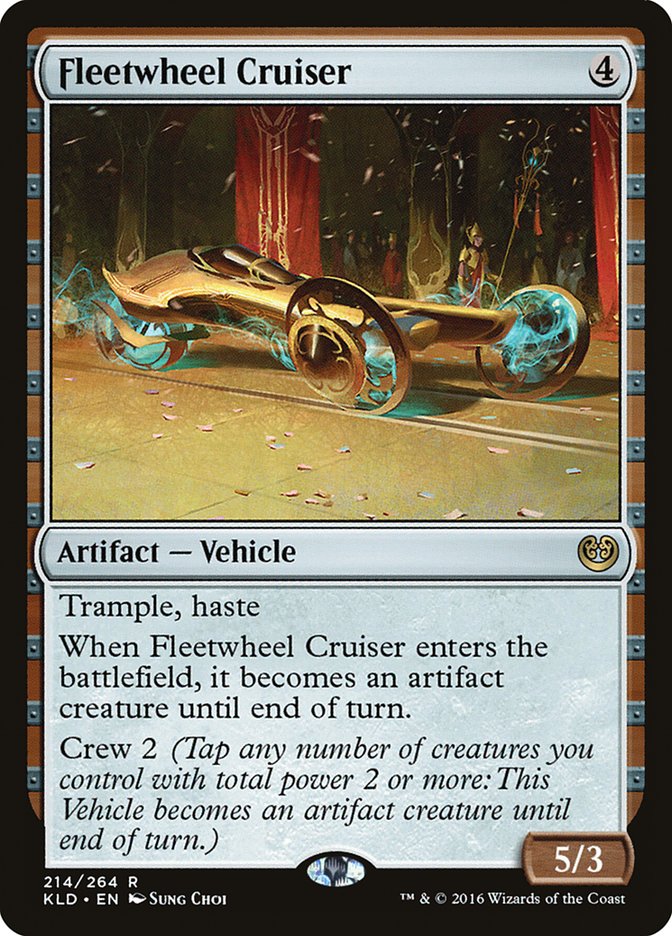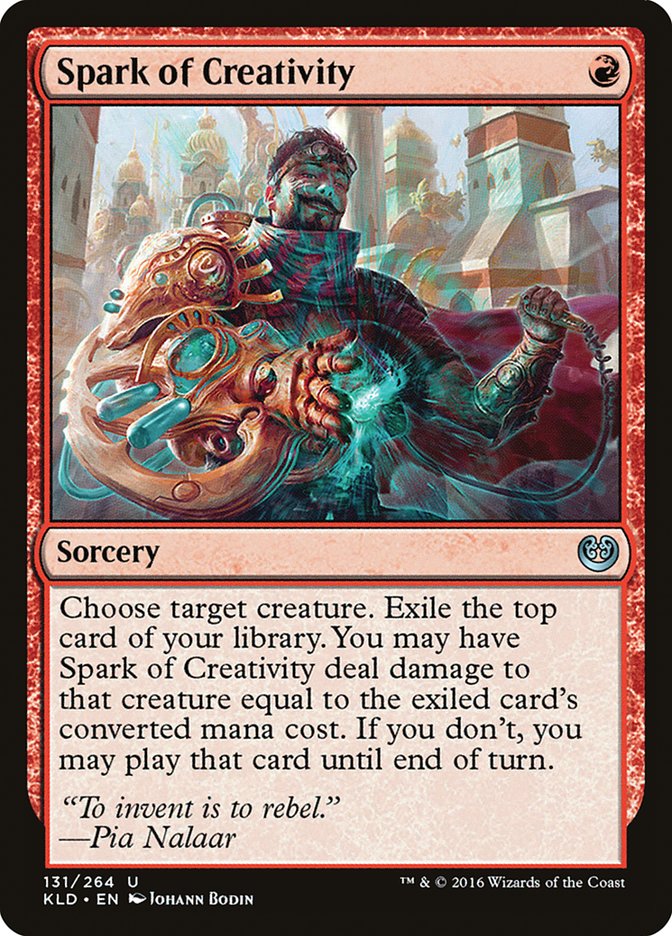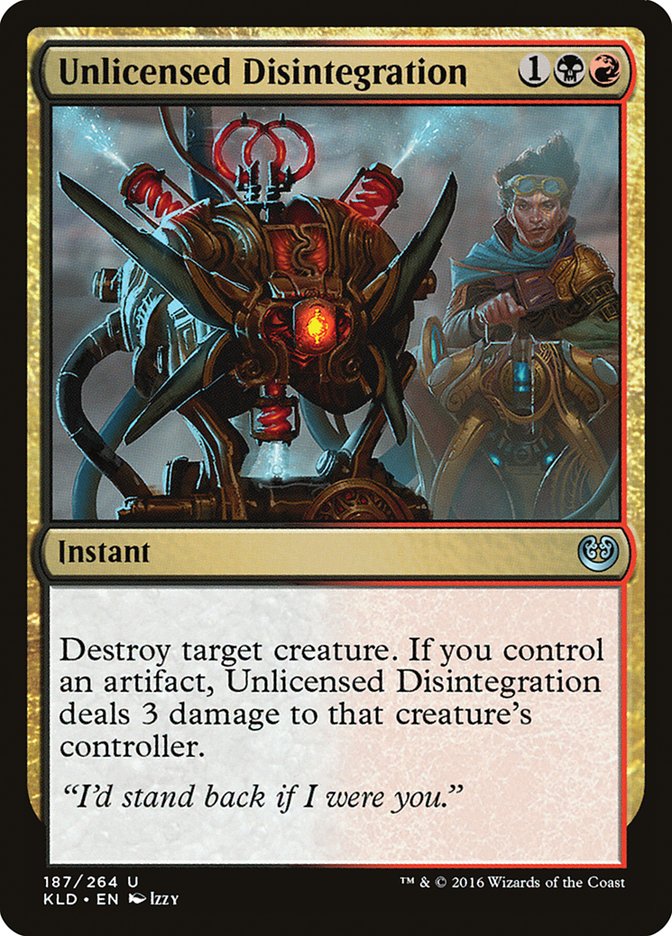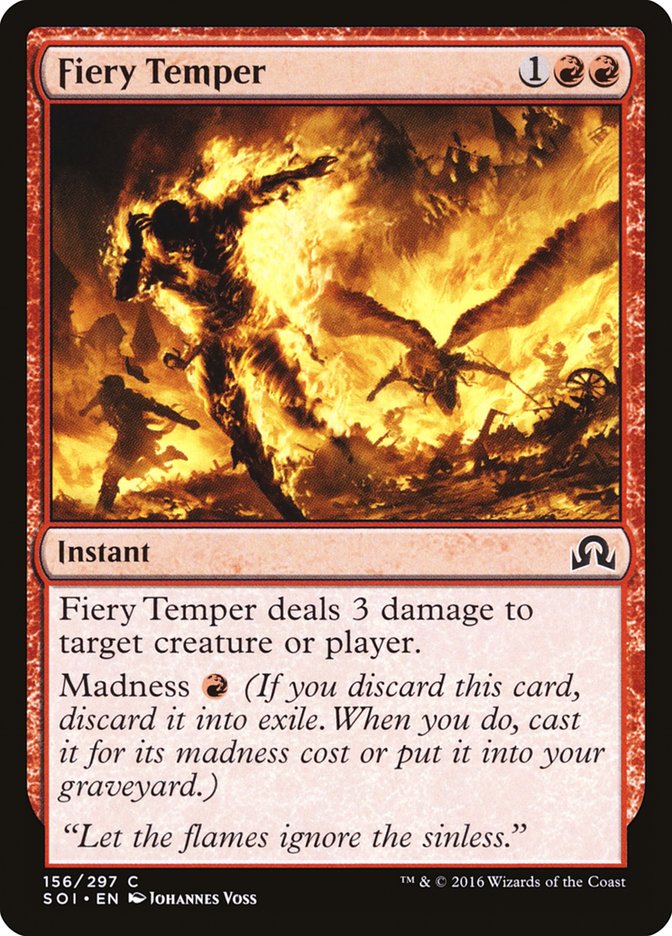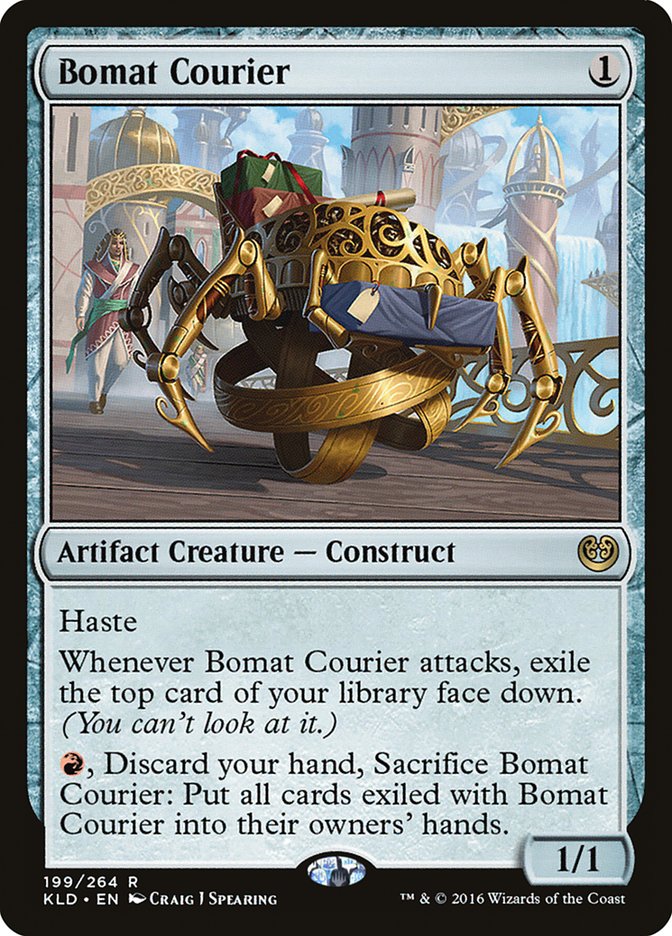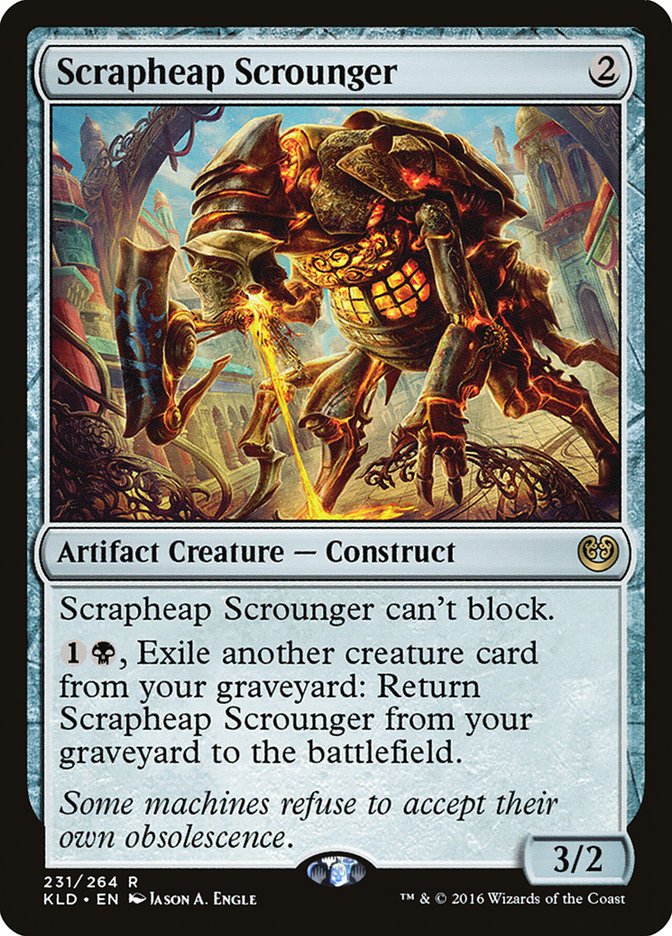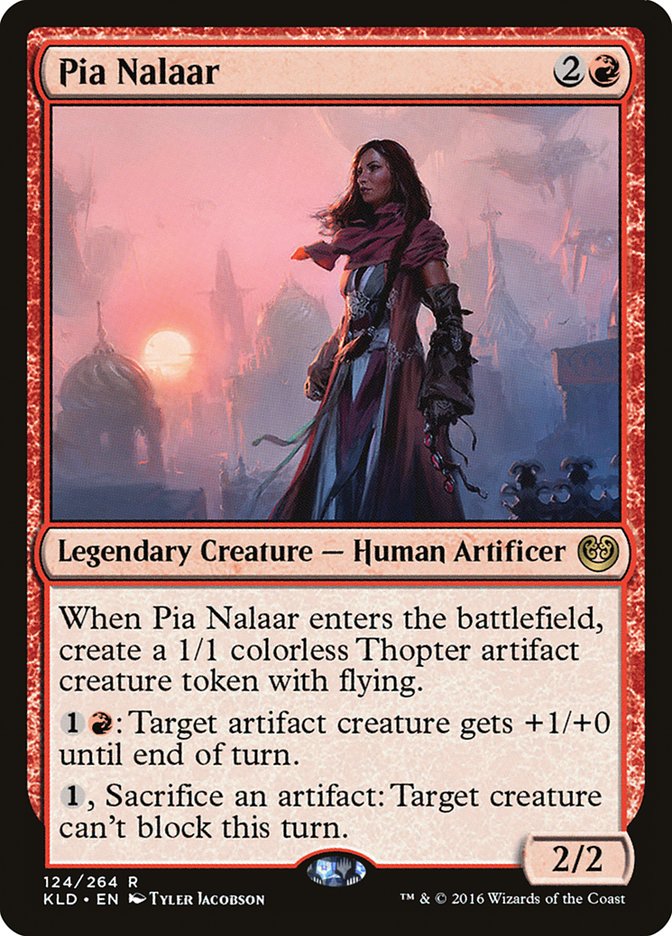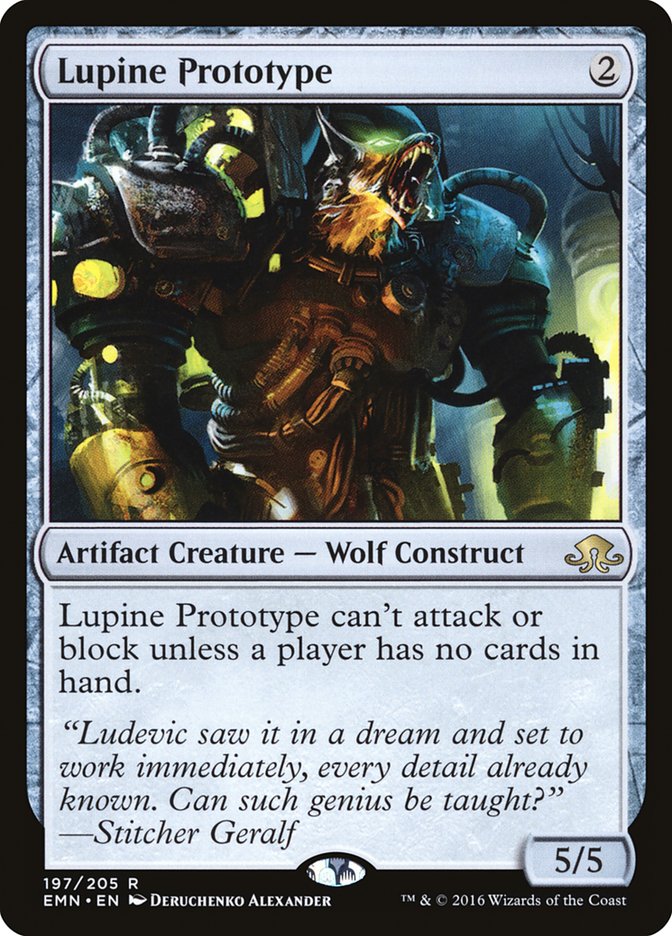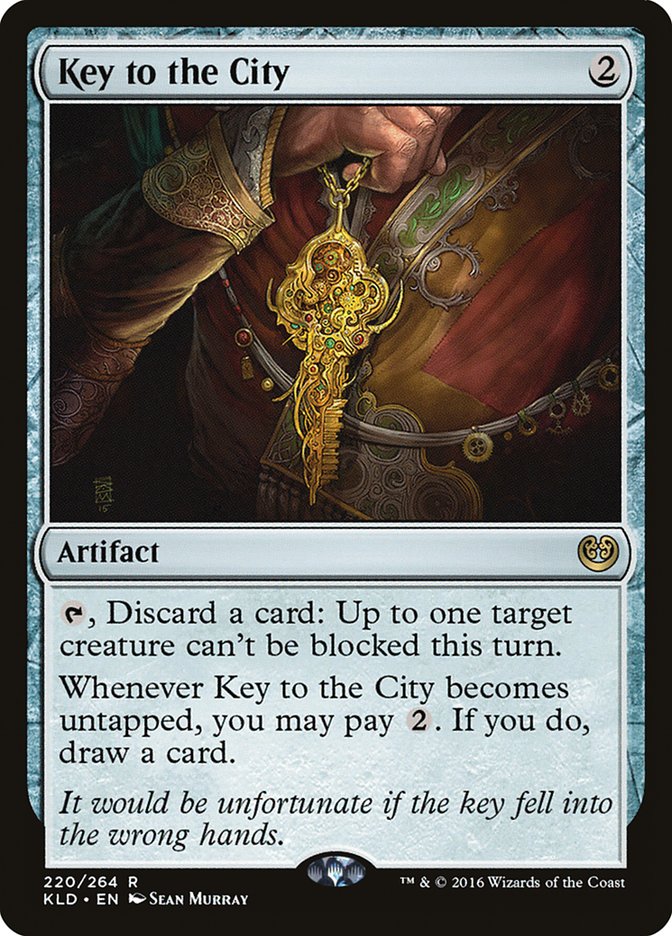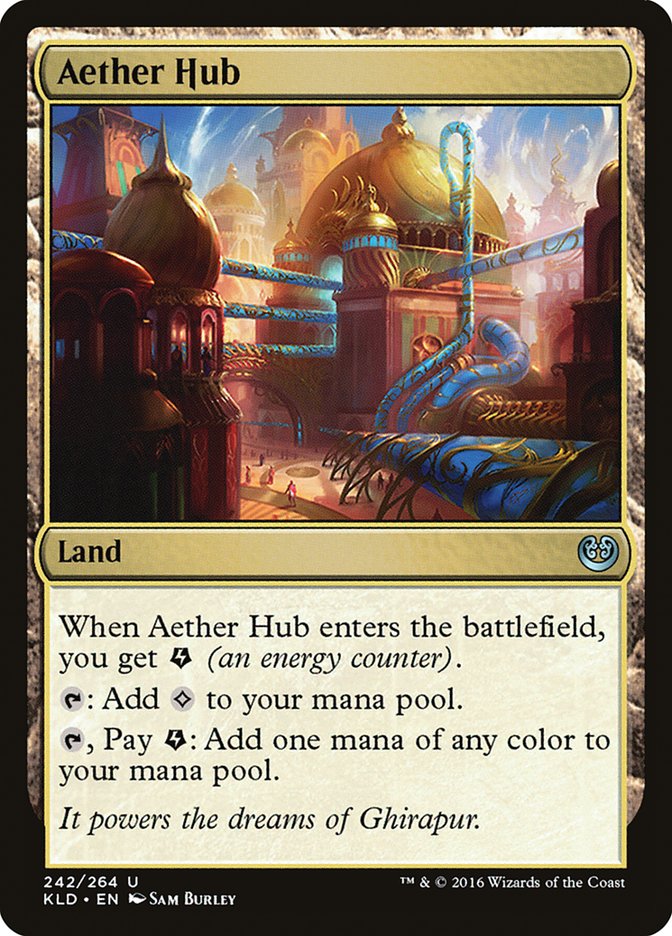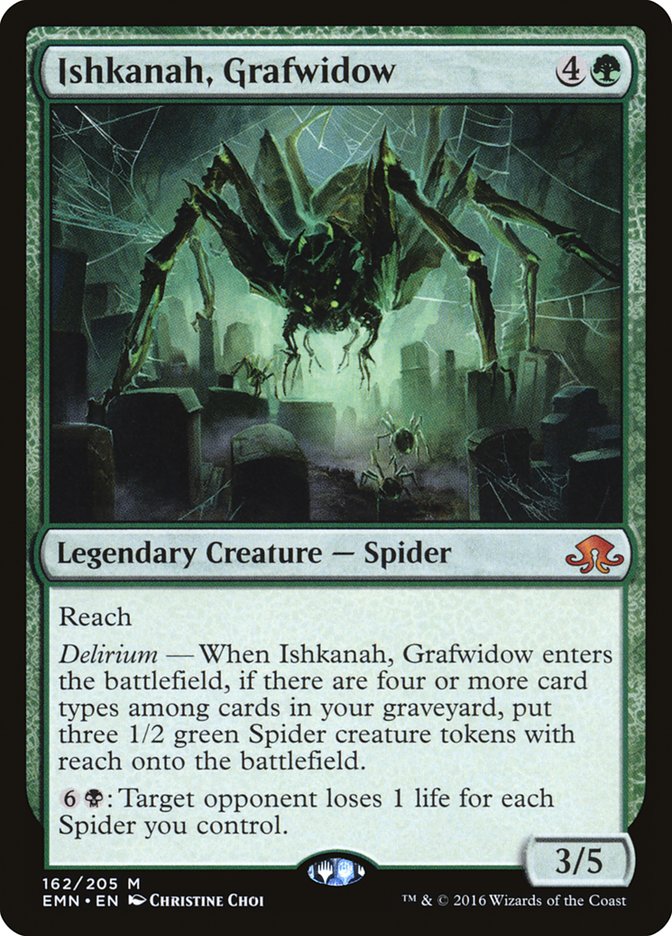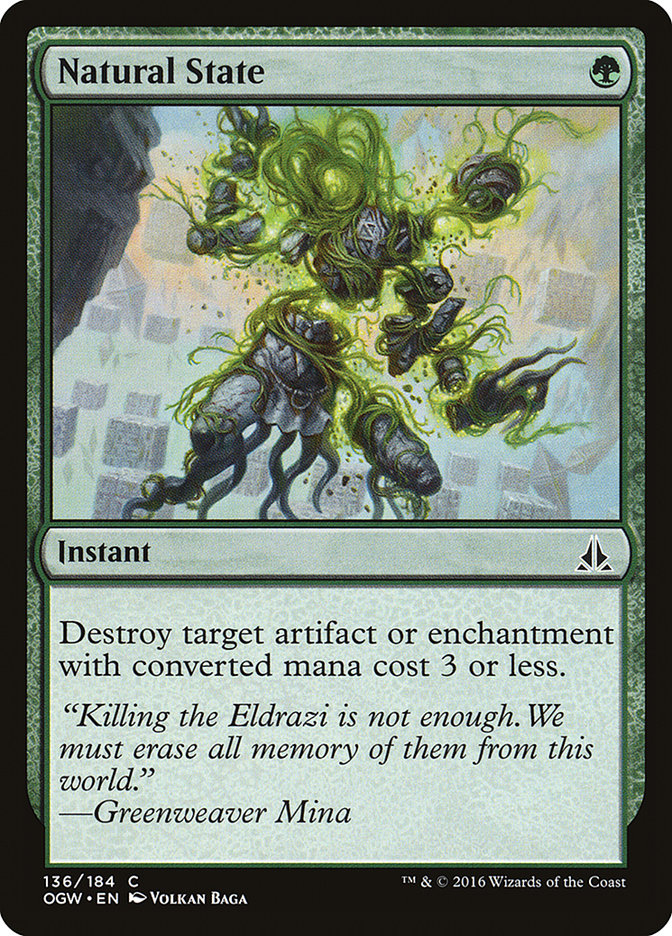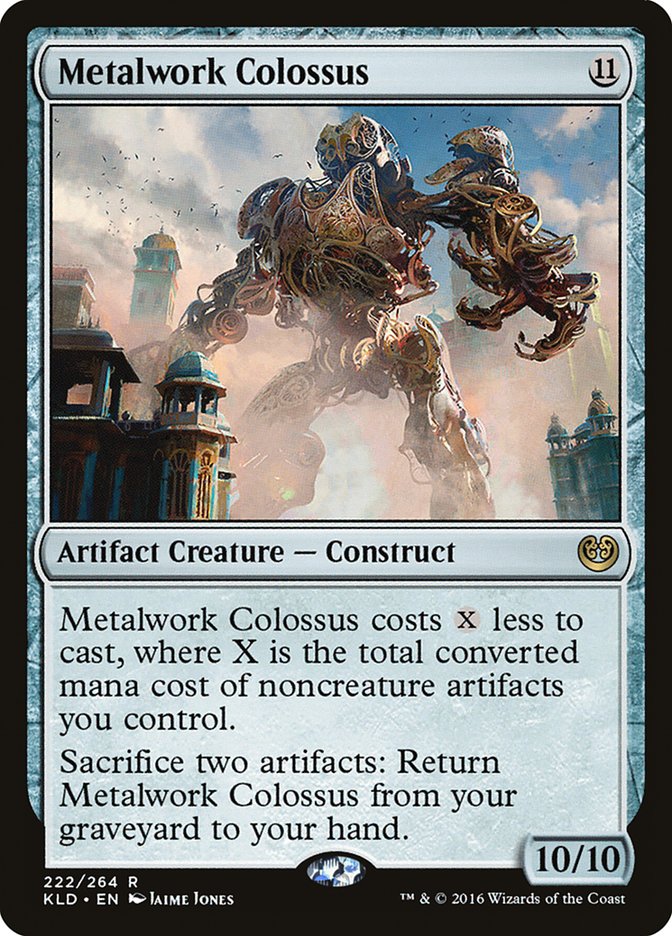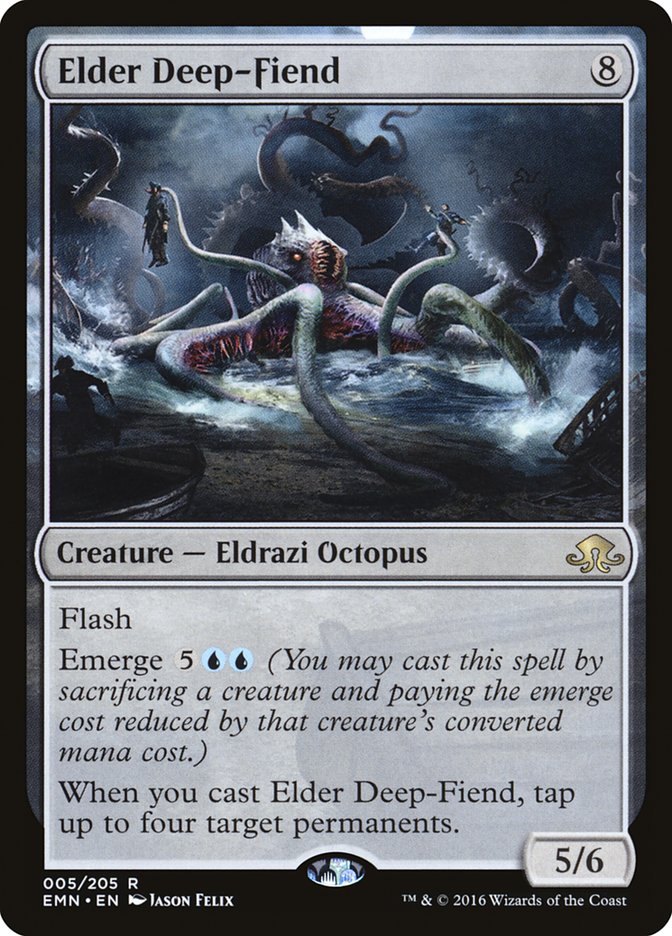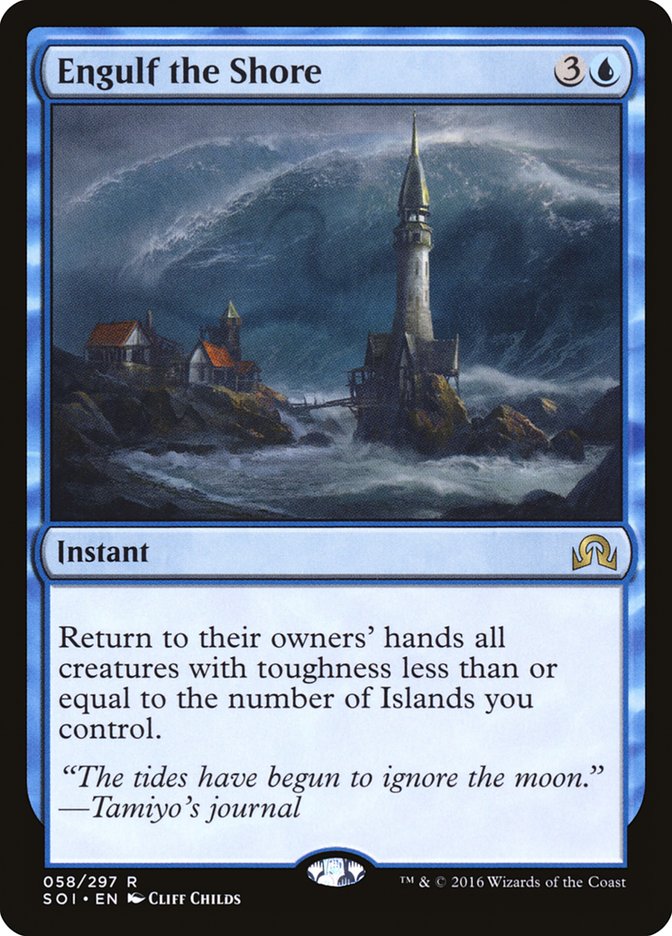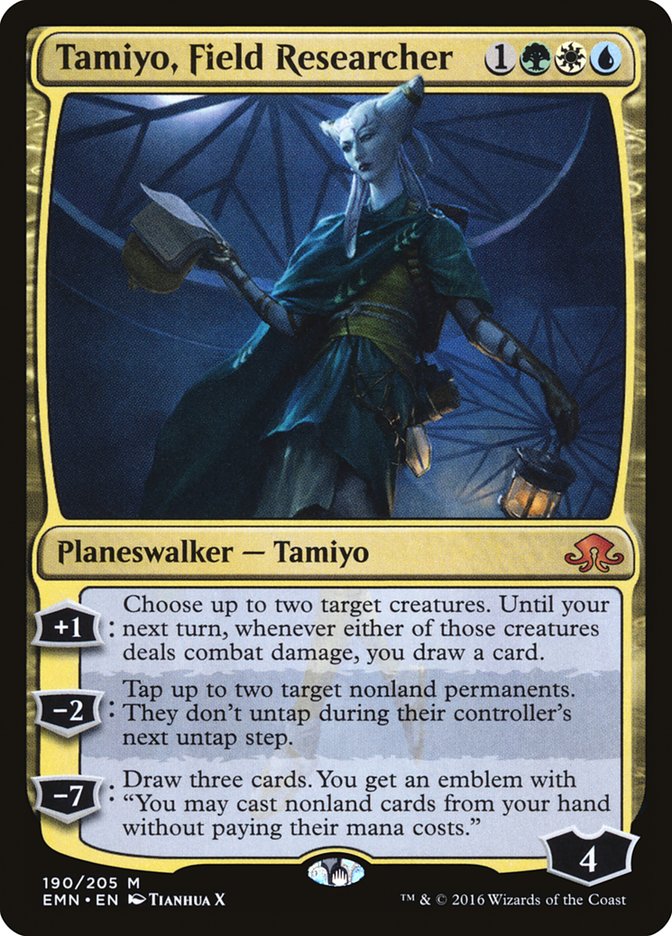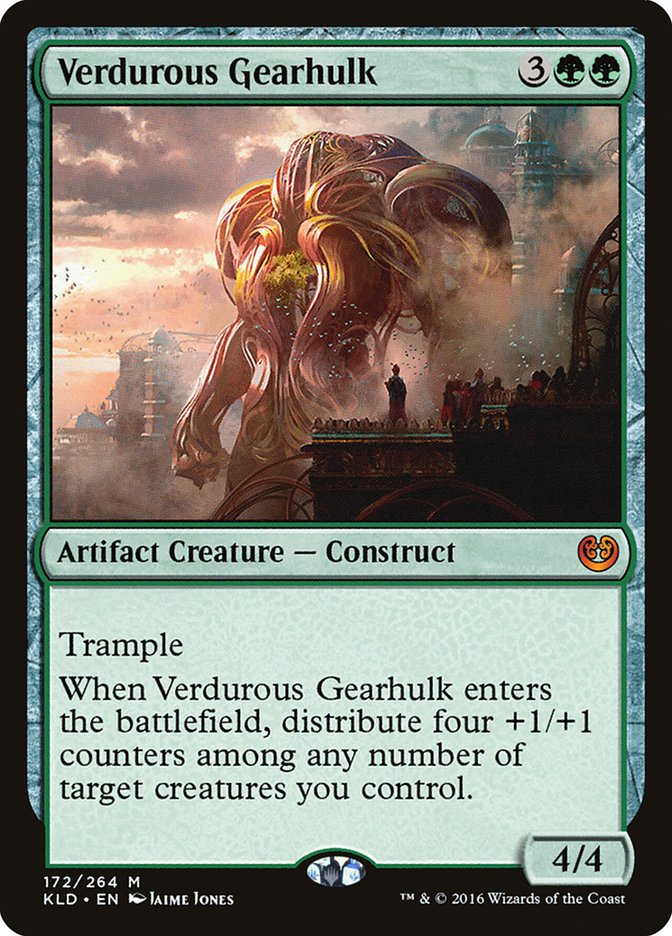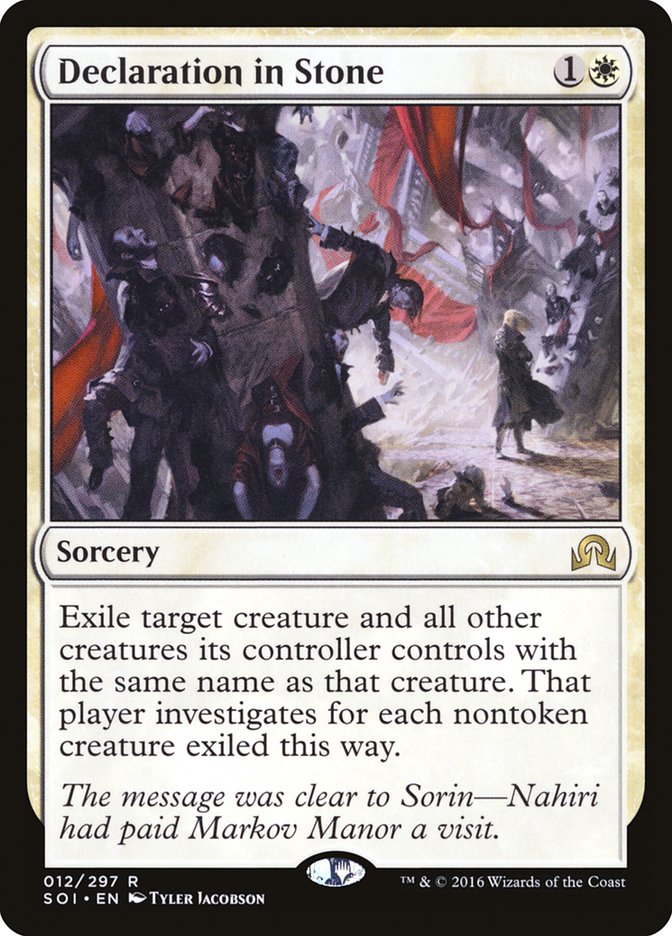Michael Majors and I just finished a semi-lengthy playtesting session. We built five decks to start, but we have a few more on the docket that we’ll continue with next week.
Obviously I was starting with a red-based aggro deck. This is where I wanted to start:
Creatures (21)
- 2 Reckless Bushwhacker
- 3 Pia Nalaar
- 4 Lathnu Hellion
- 4 Bomat Courier
- 4 Scrapheap Scrounger
- 4 Inventor's Apprentice
Planeswalkers (4)
Lands (13)
Spells (22)

After some goldfishing and theory-crafting, I ended up here:
Creatures (23)
- 3 Reckless Bushwhacker
- 4 Insolent Neonate
- 4 Pia Nalaar
- 4 Bomat Courier
- 4 Scrapheap Scrounger
- 4 Inventor's Apprentice
Planeswalkers (3)
Lands (12)
Spells (22)

After a bunch of actual games, this is where I actually ended up. And this deck is great.
Creatures (20)
- 2 Reckless Bushwhacker
- 2 Lupine Prototype
- 4 Pia Nalaar
- 4 Bomat Courier
- 4 Scrapheap Scrounger
- 4 Inventor's Apprentice
Lands (22)
Spells (18)

I was playing this deck for most our session, so I’ve got the most to say about it.
For those of you who wanted a traditional red beatdown deck with burn spells to finish, here you go. After some testing, this is where I ended up, and this is where I want to be.
First, some background. The biggest appeal to building an aggressive red deck was that Chandra, Torch of Defiance was revealed. With Lathnu Hellion and Inventor’s Apprentice following shortly, I had a lot of inspiration.
While Lathnu Hellion clearly fit into a classic aggressive shell, both Chandra and Lathnu Hellion made me want to try a bigger approach. Think something closer to Jund Dragons than Sligh. With those decks, having cards like Dreadbore and Putrefy is more than fine, as your creatures (or planeswalkers!) typically hit so hard that you rarely need burn spells to close games.
You could argue which plan is better or worse, but ultimately it’s contextual. Whether or not I stuck with that plan would be determined by actually playing games.
So, what happened? Well, I should probably start by talking about Chandra, Torch of Defiance.
The idea of clearing their blocker while leaving behind a threat sounded great. In practice, defending Chandra was incredibly difficult with my pitiful creatures, basically to the point where it wasn’t worthwhile. Soaking up some damage isn’t really part of the gameplan, and that’s kind of all Chandra would have done. Right now, there is too much emphasis on the battlefield to assume that Chandra isn’t going to get attacked down immediately.
Now, if we could protect Chandra a little better and have Flametongue Kavu plus Howling Mine, I’d be down with that. She would also work quite well as a sideboard card in slower matchups.
Since I was kind of off Chandra, at least for my Inventor’s Apprentice deck, I went looking for other options. Fleetwheel Cruiser was something I hadn’t tried out yet, so I went there next. I was horribly disappointed, at least as a maindeck card. Post-sideboard, things typically slow down as your opponents bring in more removal, so having another big, resilient threat is pretty nice. There are other applications too, such as being great at ambushing planeswalkers or beating people with sweepers.
Spark of Creativity was solid despite the overall low converted mana cost of my spells. There were times where I wasn’t upset at hitting a land or a cheap spell that didn’t pick off a Sylvan Advocate just because I wanted something to do. It did give me the feeling that 22 land was perhaps one too many, just because I could typically Spark into one Abbot of Keral Keep -style on turn 3 or 4.
Given where the deck is now, I wouldn’t want Spark of Creativity, but it’s worth keeping in mind for future decks. Many things have three toughness, so it wasn’t a reliable removal spell, but it had a lot of upside. There were even some funny situations, like when I cast it targeting a Spell Queller that stole a Fleetwood Cruiser, and Majors had to decide whether he wanted to sacrifice his Selfless Spirit to ensure its survival. He did, I hit a land, and I definitely won out on the exchange.
My shift into a leaner deck happened gradually. “Maybe the four-drops aren’t what I want.” “You might want Incendiary Flow for Primal Druid.” “Eh, I’ll try some Unlicensed Disintegrations. Holy crap, this card is good.” At the end of it all, I had a deck I really liked.
The burn suite is excellent, and I can’t stress that enough. My initial impression of Unlicensed Disintegration wasn’t high, but that’s because I was playing it alongside other clunkers. In this deck, without any four-mana cards, Searing Blaze / Murder is perfect. The mana isn’t perfect, but it’s close enough.
Initially, I was worried about Fiery Temper. When you get to cast it with madness, it’s fantastic, but how often would that actually happen? If it wasn’t very often, how far should I go to try to make it happen more frequently?
Insolent Neonate was something I was excited to play with, but was severely disappointed by. It’s another cheap card for Reckless Bushwhacker, and it’s typically good for some points of damage, similar to Bomat Courier, and could be used as a madness outlet once the body was no longer relevant. Having a way to put a creature into the graveyard on purpose made a lot of sense, particularly with Scrapheap Scrounger.
Still, it didn’t do enough. The body was fine, but I could miss my one-drop and still win games, so there wasn’t a need to play twelve of them. There were more than a few games where I found myself with too many low-impact cards, which was disastrous if I flooded out, even if just by a little bit. The madness on Fiery Temper either happened via Smuggler’s Copter on big swing turns where I’d play multiple cheap spells, or I’d hard-cast Fiery Temper and cash in Insolent Neonate at a later time. It basically wasn’t accomplishing anything I hoped it would.
I kept the Fiery Tempers because they were solid without Smuggler’s Copter and insane with it. Incendiary Flow got added in small numbers, as did Unlicensed Disintegration. Once I saw how powerful each of the burn spells were, and how well they worked together, I went up to the full twelve.
Scrapheap Scrounger is great. Pia Nalaar is solid.
Smuggler’s Copter is nuts.
It’s going to change which removal spells are viable all by itself. It’s efficient, has evasion, and finds you more gas. It basically has it all.
The Lupine Prototypes and the second Key to the City were cards that were added post-session, so we haven’t actually gotten to play with them quite yet. I will say that the first Key to the City is typically solid, and Lupine Prototype might fit in the archetype well. One of the issues that came up was leading Inventor’s Apprentice into Scrapheap Scrounger and not being able to protect them from Kozilek’s Return.
Getting hellbent is easy if you want it to happen, but most of the time I felt better holding onto things like Reckless Bushwhacker and Unlicensed Disintegration and waiting for the right time to use them. You’re generally going to win more games by being patient, especially with your more powerful effects, and especially with your effects that you have a limited amount of. In this case, your hard removal and global pump are things you probably only get to do once per game. You need to make them count.
However, there are definitely spots where activating your 5/5 (and maybe even making it unblockable) will be better than having a Murder or Reckless Bushwhacker.
Key to the City is deceptively good. Being a madness enabler and an artifact makes it an immediate consideration. Being another card that can protect your Inventor’s Apprentice from Kozilek’s Return is nice too, even if it’s something you don’t want to drop.
Anyway, those are the weirdos. I wouldn’t be surprised if they don’t make the final cut.
The manabase wasn’t bad. Most of the time, my mana was great. However, there were a few times where I didn’t have black mana early, but that typically isn’t an issue because you don’t need it right away. The truly bad hands contain only a Swamp and an Aether Hub for mana. I kept them sometimes because of how many artifacts I could still cast with the hand, but it’s certainly risky.
Overall, the deck could grind well, which shouldn’t be surprising but is definitely worth noting. I was still able to play Magic despite flooding out a bunch of times because of Bomat Courier, Smuggler’s Copter, and Scrapheap Scrounger. Having burn to close the game also helped. I won more than a few of the longer games.
It’s also worth mentioning how much time you actually get when you’re the one putting your opponent on the defensive. They often don’t have the luxury of mounting an offense when they’re focusing on not dying. The fact that you have Reckless Bushwhacker always makes it difficult to start attacking, because you might want to keep an extra creature back just in case. Since they’re doing that, you have more time to draw into your burn spells or a Pia Nalaar to falter them with the help of Scrapheap Scrounger recursion.
Ishkanah, Grafwidow did not seem particularly beatable. We’ll have to try to fix that with sideboarding.
Instant-speed Kozilek’s Returns out of the graveyard were much more powerful than sorcery-speed ones because of Vehicles. Granted, a sorcery-speed one usually meant that Wretched Gryff was involved, but it was never really safe from Unlicensed Disintegration anyway.
So far, I’m impressed.
Creatures (19)
- 3 Pilgrim's Eye
- 2 Emrakul, the Promised End
- 4 Wretched Gryff
- 2 Elder Deep-Fiend
- 2 Ishkanah, Grafwidow
- 4 Primal Druid
- 2 Filigree Familiar
Planeswalkers (1)
Lands (8)
Spells (32)

After playing some games, we quickly cut the Hedron Archives. Kiora is next on the chopping block. The fourth Wretched Gryff is a necessity in a world with Smuggler’s Copter. Realistically, some spot removal might be necessary, but there’s not really a good option. Aether Meltdown is a possibility, but not a good one because it doesn’t stop the looting. Getting attacked for three is only part of the problem. Natural State is likely a good sideboard card.
Contingency Plan was pretty good, especially with the additional blue sources in the manabase. Gather the Pack frequently whiffed on creatures altogether, so Contingency Plan isn’t that much worse, especially since it smooths out your draw and helps you plan your future turns. Being able to keep a necessary land or creature is pretty nice, even if it’s card disadvantage. This deck is trying to set up to do broken things, so being down a card isn’t something you actually care about. You’ll make up whatever disadvantage you have by making big plays in the mid-game.
This deck is basically the same, and that’s not necessarily a bad thing. It’s powerful.
Creatures (14)
- 2 Pilgrim's Eye
- 1 Elder Deep-Fiend
- 2 Filigree Familiar
- 2 Torrential Gearhulk
- 4 Glint-Nest Crane
- 3 Metalwork Colossus
Lands (3)
Spells (43)

“Oh man, I can emerge off an animated Vehicle!”
We played just enough with this deck to get a feel for it. Overall, it felt powerful, but it was definitely lacking small-ball interaction for things like Smuggler’s Copter.
Once your engine is online, you do some pretty crazy stuff.
· Crew a Vehicle and Engulf the Shore in response to both keep your Vehicle on the battlefield and Crew it.
· Chain Metalwork Colossus into Colossus into Elder Deep-Fiend thanks to Sanctum of Ugin. If you have some mana rocks, your Colossuses are going to be very cheap.
· Use Torrential Gearhulk to Flashback Engulf the Shore. With Sanctum of Ugin and mana acceleration, you can control how big your Engulf is by hitting six mana without necessarily having six Islands on the battlefield, thus choosing whether or not you want to actually bounce your own Gearhulk.
· Sacrifice Metalwork Colossus to Elder Deep-Fiend (extra points for if it’s in response to a Reflector Mage trigger), and then pick it up in response.
· “I’ll attack with Metalwork Colossus. No blocks? Okay, Part the Waterveil, then Engulf the Shore next turn.” Key to the City also works.
Yeah, this deck is great. A tad slow, but great.
Creatures (26)
- 4 Reflector Mage
- 4 Sylvan Advocate
- 4 Tireless Tracker
- 4 Spell Queller
- 2 Selfless Spirit
- 4 Verdurous Gearhulk
- 4 Servant of the Conduit
Planeswalkers (4)
Lands (17)
Spells (13)

Sorry to break it to you, but Bant is still good.
The mana is still dicey at times, but Servant of the Conduit does a lot of nice things for you, the best of which is casting Tireless Tracker followed by a land on turn 3. Following that up with a Verdurous Gearhulk that helps put your creatures out of range of a flashbacked Kozilek’s Return is pretty much game over.
Tamiyo, Field Researcher is great, and now that Collected Company is gone, there’s no longer a reason not to play it. The same goes for anything that didn’t work well with Collected Company, such as Essence Flux or the new Verdurous Gearhulk. Those cards are very powerful, add new dimensions to your decks, and you’ll barely notice Collected Company is absent.
Declaration in Stone is still nice, and I want some more copies, but be careful. If they block with a Crewed Vehicle, know that Declaration in Stone won’t get rid of their other, un-Crewed copy. That came up!
Next Week
There are still a few things on the docket, including various G/W decks, Cryptolith Rite, and trying to break Ghirapur Orrery. R/B looked great, as did Bant, although both decks could use some fine-tuning. Unless Temur Emerge with Matter Reshapers and more threats ends up looking better, and I doubt it, that deck is basically ready to go. If the metagame is slow for whatever reason, I could see the Metalwork Colossus deck being an excellent metagame choice.
In the meantime, I’ll be scouring the Internet looking for other ideas for sweet things to try.


